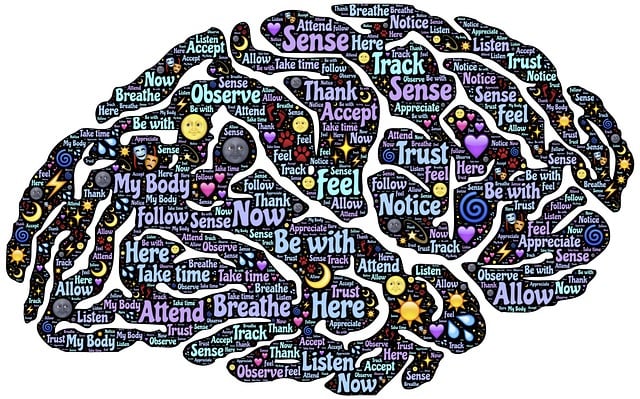Risk management is critical in mental health care for adolescents with PTSD, focusing on staff training, crisis protocols, and open communication. Identifying triggers through journaling and stress management workshops offers a holistic approach to treatment, promoting emotional well-being and resilience. Customized therapy sessions using evidence-based practices, like Emotional Well-being Promotion Techniques, are key. Systemic changes driven by mental health policy advocacy enhance access, early intervention, and resilience in at-risk populations.
“In the realm of mental health care, risk management planning is an indispensable tool for ensuring client safety and well-being. This article explores a comprehensive guide for professionals specializing in therapy for adolescent teens post-traumatic stress disorder (PTSD). From understanding the nuances of risk management in mental health practices to identifying and mitigating specific risks associated with PTSD, we delve into essential strategies. Learn about implementing robust safety protocols for therapy sessions, continuous monitoring techniques, and improvement strategies to foster a secure environment for vulnerable clients.”
- Understanding Risk Management in Mental Health Practices
- Identifying and Assessing Risks Specific to Adolescent Teens with PTSD
- Implementing Effective Safety Protocols for Therapy Sessions
- Continuous Monitoring and Improvement Strategies for Client Well-being
Understanding Risk Management in Mental Health Practices

Risk management is an integral part of maintaining a safe and healthy work environment for mental health professionals, especially when dealing with vulnerable populations like adolescent teens suffering from post-traumatic stress disorder (PTSD). This involves identifying, assessing, and mitigating potential risks to ensure the well-being of both clients and practitioners. By implementing robust risk management strategies, therapy sessions for adolescents experiencing PTSD can be effectively structured while minimizing possible triggers or adverse events.
In the realm of mental health care, understanding burnout prevention and stress reduction methods is crucial. Professionals must prioritize self-care practices and utilize evidence-based techniques to manage their own mental wellness alongside that of their clients. A well-rounded risk management plan may include regular staff training on trauma-informed care, establishing clear protocols for crisis intervention, and encouraging open communication among team members. Additionally, integrating stress reduction methods into the daily routine can help professionals maintain resilience in the face of high-stress situations, ensuring consistent and effective therapy delivery for adolescent teens with PTSD.
Identifying and Assessing Risks Specific to Adolescent Teens with PTSD

Identifying and assessing risks specific to adolescent teens with Post-Traumatic Stress Disorder (PTSD) is a critical aspect of risk management planning for mental health professionals. This age group faces unique challenges, as their developing brains make them particularly vulnerable to the long-term effects of trauma. Mental health practitioners must be adept at recognizing subtler indicators of distress, such as changes in mood, sleep patterns, or social behavior, which might not always manifest as overt symptoms. Incorporating techniques like mental wellness journaling exercises into therapy can provide valuable insights into teens’ internal experiences and help track their emotional well-being over time.
Moreover, structured stress management workshops designed specifically for adolescents can equip them with coping mechanisms tailored to their age group. These activities, when integrated into a comprehensive treatment plan, offer a holistic approach to addressing the complex needs of teen clients with PTSD. Professional guidance in emotional well-being promotion techniques is essential to help these individuals navigate their trauma and foster resilience as they grow.
Implementing Effective Safety Protocols for Therapy Sessions

In implementing effective safety protocols for therapy sessions with adolescent teens suffering from post-traumatic stress disorder (PTSD), mental health professionals must prioritize a structured yet flexible approach. Risk management planning is pivotal, focusing on strategies that foster emotional intelligence and empathy building. By integrating these concepts into session structures, therapists can create a safe space where teens feel understood and empowered to process traumatic memories.
For instance, establishing clear boundaries and consistent communication ensures the teen’s comfort and empowers them to express their feelings and triggers openly. Techniques like active listening, coupled with emotional awareness exercises, help professionals recognize and respond appropriately to any signs of distress during sessions. This holistic approach not only enhances the therapeutic experience but also strengthens the bond between therapist and client, making it easier for adolescent teens to navigate their PTSD journey.
Continuous Monitoring and Improvement Strategies for Client Well-being

In the dynamic field of mental health care, particularly when addressing issues like Post-Traumatic Stress Disorder (PTSD) in adolescent teens, continuous monitoring and improvement strategies are paramount to ensuring client well-being. Regular assessment tools and feedback mechanisms allow therapists to tailor therapy sessions effectively, incorporating evidence-based practices such as Emotional Well-being Promotion Techniques. This proactive approach fosters a resilient mindset in young individuals, equipping them with coping mechanisms to navigate life’s challenges.
Beyond individual therapy, Mental Health Policy Analysis and Advocacy plays a crucial role in system-wide improvements. By staying abreast of research advancements and industry best practices, mental health professionals can contribute to policy changes that enhance access to care, promote early intervention, and ultimately build resilience among at-risk populations. Such efforts not only benefit current clients but also lay the groundwork for a more robust and supportive mental healthcare ecosystem in the future.
Mental health professionals play a vital role in helping adolescents suffering from Post-Traumatic Stress Disorder (PTSD). Effective risk management planning is essential to ensure safe and healing therapy sessions. By understanding specific risks associated with this demographic, implementing robust safety protocols, and continuously monitoring client well-being, therapists can create a secure environment that fosters recovery. This comprehensive approach, tailored to the unique needs of adolescent PTSD patients, is key to successful treatment outcomes.














